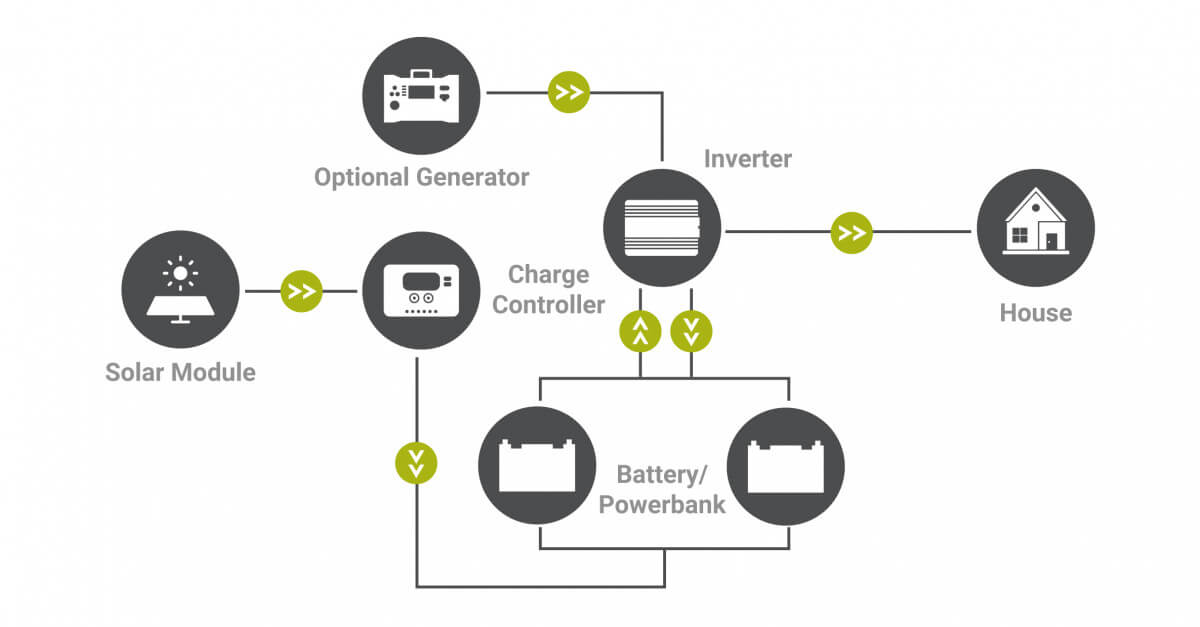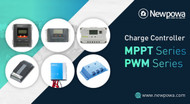SOLAR CONTROLLER : PWM or MPPT?
21st Jul 2020
During our blog “An Introduction to Off-grid Solar Applications”, we have mentioned that a solar controller is an essential part for a complete solar system. It is especially important if you have panels with higher wattage output. The solar market has grown exponentially over the years, there are so many options for a charge controller like PWM or MPPT. And the price would range from a few dozens of dollars to hundreds.

So which controller is right for you? In this article, we will talk about the basics for a charge controller. Then, we will focus on the difference between PWM and MPPT charge controller.
What is a Controller for?
Manage Current Inflow
A solar controller or solar regulator aims to mange the power inflow from your solar panels. It is designed to regulate the current flow so the panels won’t over-charge your devices such as a battery. By doing that, the charge controller efficiently protects the battery and potentially prolongs the lifespan.
Monitor Specs
The controller provides an easier way for you to see some of the specs of your solar system and battery. Common information would include charging indication, battery capacity indicator, discharging indication, load indication, unit of current, and unit of voltage.
Prevent Reverse Charging
The solar controller would also prevent any current flowing back to the solar panel when there is no sunlight. This can protect the solar panels from getting damage caused by reverse current flow.
What is PWM Charge Controller?
There are mainly two types of solar controller. The first one is known as PWM, or Pulse Width Modulation controllers. PWM controllers have been on the market longer and is known as a traditional regulator for solar panels.
In a solar system, PWM controller is placed between the solar arrays and the battery. It can slowly reduce the power inflow to the battery as the capacity reaches full. When the battery is fully charge, the PWM will provide a trickle charge to overcome the battery self-discharge. To use PWM charge controller, it is ideal to keep the voltage of the solar system and battery the same.
What is MPPT Charge Controller?
MPPT solar controller is a solar controller with maximum power point tracking function. There is a buck circuit between the module and the battery. MPPT solar controller can find out the voltage and current of solar panel in real time, and track the maximum power continuously, so that the system always charges the battery with the maximum power. The MPPT tracking efficiency is 99%, and the power generation efficiency of the whole system reaches 97%, and the battery charging stage is divided into MPPT charging, constant voltage equalizing charging and constant voltage floating charging stage.
Difference between PWM and MPPT
Most PWN charge controller will indicate their charging method, e.g. three stage or four stage. The individual stage usually includes: bulk, absorb, and float. PWM charge controller has been on the market longer, thus the technology is mature. The price tends to be lower. However, the utilization rate of components is low. In plain words, the ability to turn solar into electricity is around 70%.
The MPPT charge controller has a multi-stage charging method, which is more efficient. Common stages include: bulk, boost charge, absorb charge, float, etc. For MPPT charge controller, and the utilization rate or the ability to turn solar into electricity of the module is about 90%.
Overall
The key difference between PWM and MPPT are the price and efficiency. PWM charge controller is usually cheaper, while MPPT costs more for its more complex technology. In terms of efficiency, MPPT has better charging and conversion rate. In other words, it is more capable of turning solar into electricity. For more information, you could click the link below:
PWM: https://www.newpowa.com/products/charge-controllers/pwm-charge-controllers/
MPPT: https://www.newpowa.com/products/charge-controllers/mppt-solar-charge-controllers/
